What is Snapdragon X Elite? Explaining Qualcomm's new flagship Arm laptop processors.
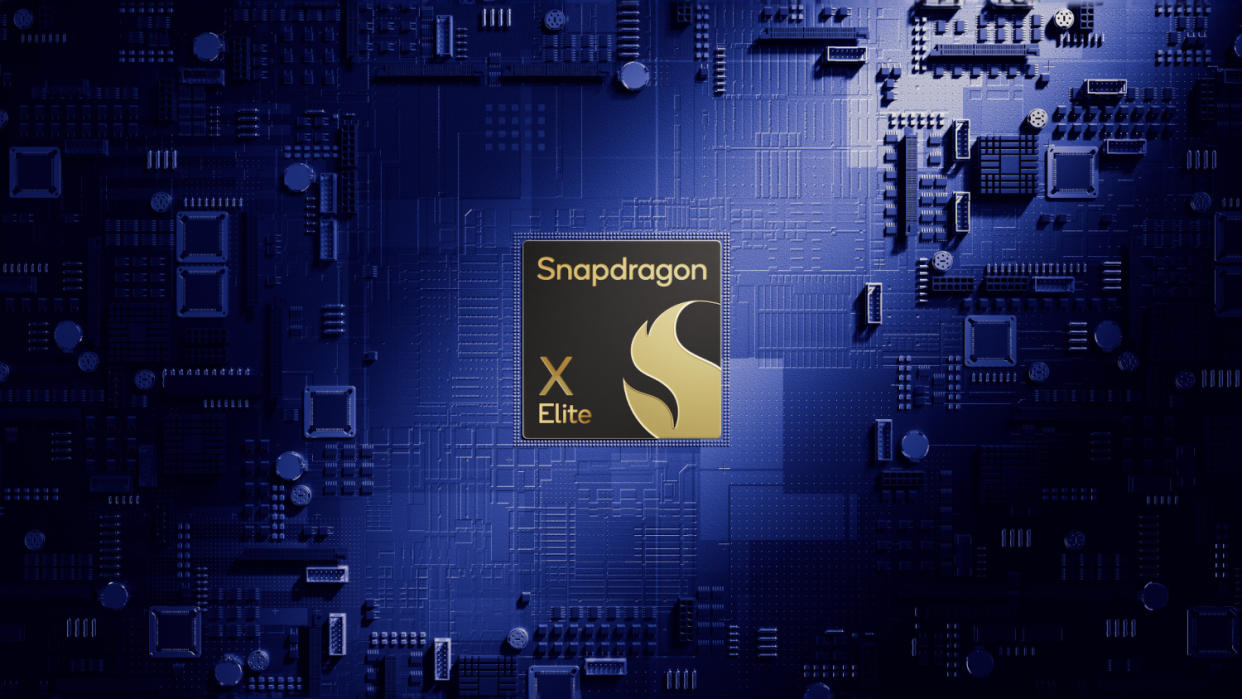
Quick answer: The Snapdragon X Elite is an ARM64 SoC — with Oryon CPU, Adreno GPU, and Hexagon NPU — that is expected to revolutionize Windows on Arm devices. Four versions of the X Elite have been announced, each offering slightly different performance. They're powerful, they're efficient, and they boast the strongest NPU so far for AI acceleration in mobile PCs. Expect Qualcomm's Snapdragon X Elite to launch in 2024 in the first wave of Copilot+ PCs from all major laptop manufacturers.
What is Snapdragon X Elite?
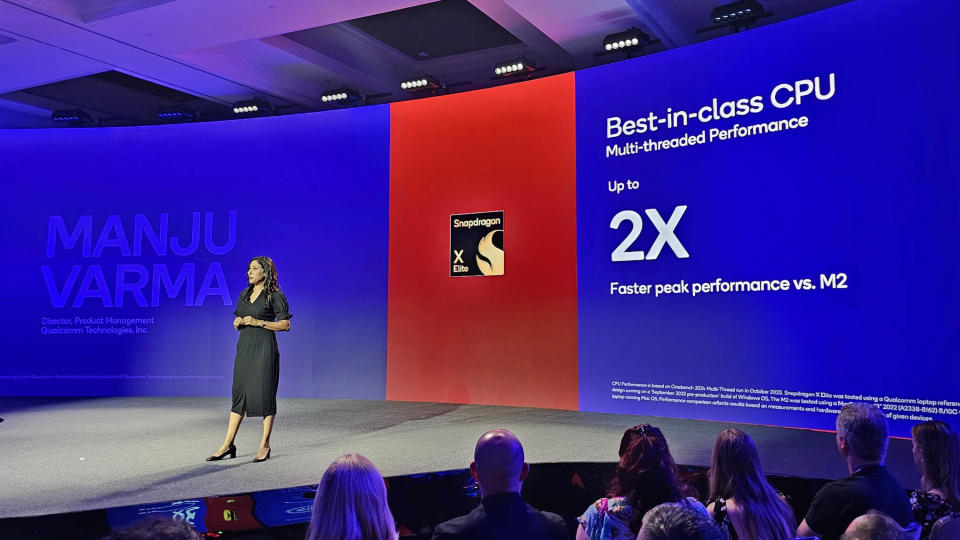
Qualcomm officially unveiled its next-gen Snapdragon X Elite platform in October 2023, kicking things off in a big way with bold claims about it being the most powerful and efficient mobile System-on-Chip (SoC) you can find. The Snapdragon X Elite encompasses a processor (CPU), integrated graphics (GPU), and a Neural Processing Unit (NPU) built together to form an SoC.
The X Elite was originally unveiled with three separate SKUs, including the most powerful X1E-84-100, mid-range X1E-80-100, and entry-level X1E-78-100. Qualcomm later unveiled a Snapdragon X Elite (X1E-00-IDE) at Computex 2024 as part of a Snapdragon Developer Kit. The chip is identical to the X1E-84-100 except for a 4.3GHz (compared to 4.2GHz) dual-core boost clock.
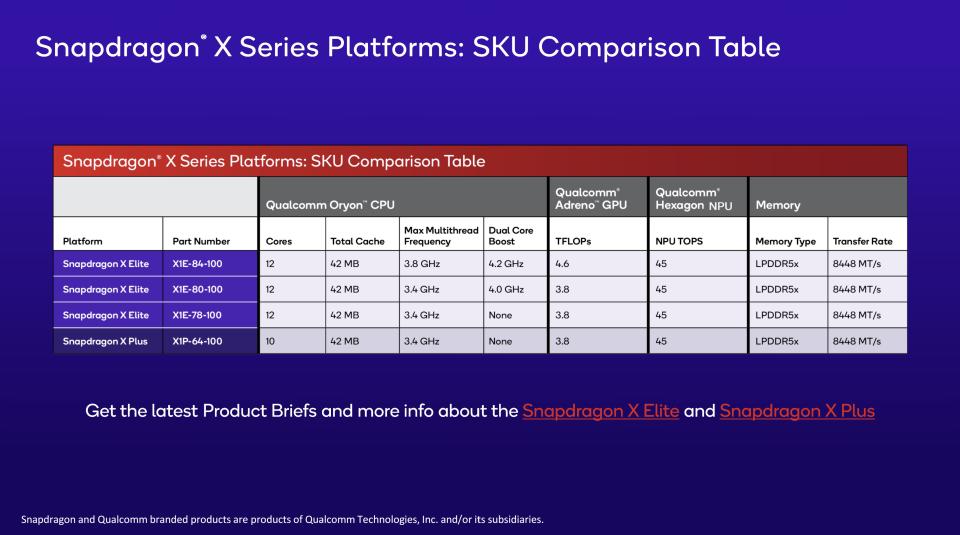
Breaking down the X1E-84-100, the 64-bit CPU is Qualcomm Oryon built on a 4nm node with 12 cores and up to a 3.8GHz clock speed, jumping to 4.2GHz in a dual-core boost mode.
The Qualcomm Adreno GPU handles up to 4.6 TFLOPS with support for DirectX12, making it well-suited for Windows games. To compare, the Xbox Series S operates at 4 TFLOPS, though the current-gen Series X goes beyond 12 TFLOPS. The CPU supports up to 64GB of LPDDR5x RAM at an 8533MT/s transfer rate, and it handles M.2 PCIe 4.0 NVMe storage.
Most important, at least for those who are keeping up with the emerging world of AI PCs, is the Qualcomm Hexagon NPU capable of 45 TOPS for local AI acceleration. It easily beats the 10 TOPS and 16 TOPS provided, respectively, by Intel and AMD's current generation of NPUs. The X Elite SoC is touted as reaching 75 TOPS total with all components counted.
Here's a closer look at the specs of the flagship X Elite (X1E-84-100).
The X1E-80-100 and X1E-78-100 variants offer the same 12 cores, 42MB cache, and 45 TOPS of NPU power, with LPDDR5x RAM support at a transfer rate of up to 8,448MT/s. However, the max clock speed tops out at 3.4GHz. The X1E-80-100 retains dual-core boost capabilities up to 4GHz, while the X1E-78-100 lacks any dual-core boost capabilities. GPU capabilities are also capped at a lower 3.8 TFLOPS.
Other standouts across the three platforms include 5G and Wi-Fi 7 wireless connectivity, support for three concurrent displays at 4K with 60Hz refresh rate, USB4 connectivity, and AV1 encoding and decoding for 4K HDR video. There's also a Micro NPU for a "Sensing Hub," used for always-on human presence detection.
Laptops with the Snapdragon X Elite SoC were unveiled on May 20, 2024 alongside Copilot+. Windows Central Editor-in-Chief Daniel Rubino has dubbed Qualcomm and Microsoft’s initiative as a “Great Reset” in the Windows PC industry, bringing a mix of AI features and ARM64 computing unlike anything we’ve ever seen.
You can check out all of the Copilot+ laptops announced on May 20, and be sure to check out the best Copilot+ preorder deals that include a 50-inch 4K smart TV.
ARM64 vs. x86-64
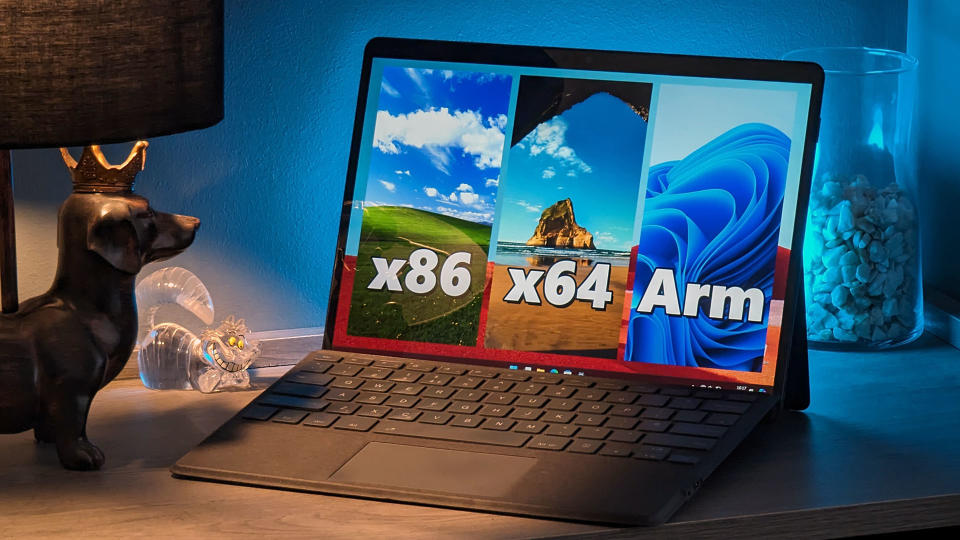
The Snapdragon X Elite is an ARM64 processor with an architecture that differs from the more common x86-64 (64-bit) processors offered by Intel and AMD. ARM architecture has been used in smartphones for decades, and it has been crossing over to PCs more recently. The Surface Pro 9 with 5G, for example, is a Windows on Arm laptop that runs a Microsoft SQ3 chip (based on Qualcomm's aging Snapdragon 8cx Gen 3).
Apps created for ARM64 can't be read by x64 systems, and vice-versa. However, thanks to emulation and app-makers creating versions compiled specifically for Arm, you shouldn't worry about getting your favorite software to run on a system powered by the Snapdragon X Elite.
Windows Central Editor Ben Wilson wrote a great PSA about ARM PCs and Windows 11 app compatibility, explaining the nuance of performance and behavior when running x86-64 apps on an ARM device. Bottom line? Windows on Arm has come a long way, and while there are some occasional hiccups, you shouldn't be discouraged from buying a laptop with the X Elite platform.
Qualcomm vs. Apple and Intel
Qualcomm came in hot after its initial X Elite announcement to show off some performance metrics compared to Apple and Intel. At an October 2023 Snapdragon Summit Keynote, Qualcomm's CEO Cristiano Amon discussed comparisons to Apple and Intel processors.
According to Amon, the Snapdragon X Elite (X1E-84-100) is faster in single-threaded performance with 30% less power consumption compared to the M2 Max. On Intel's side, the X Elite is fast in single-threaded performance and remains 70% more efficient than the Core i9-13980HX.
In a benchmarking session for reporters shortly after the keynote, it was clearly shown that Qualcomm wasn't bluffing about performance. You can see the results in the graphs below.
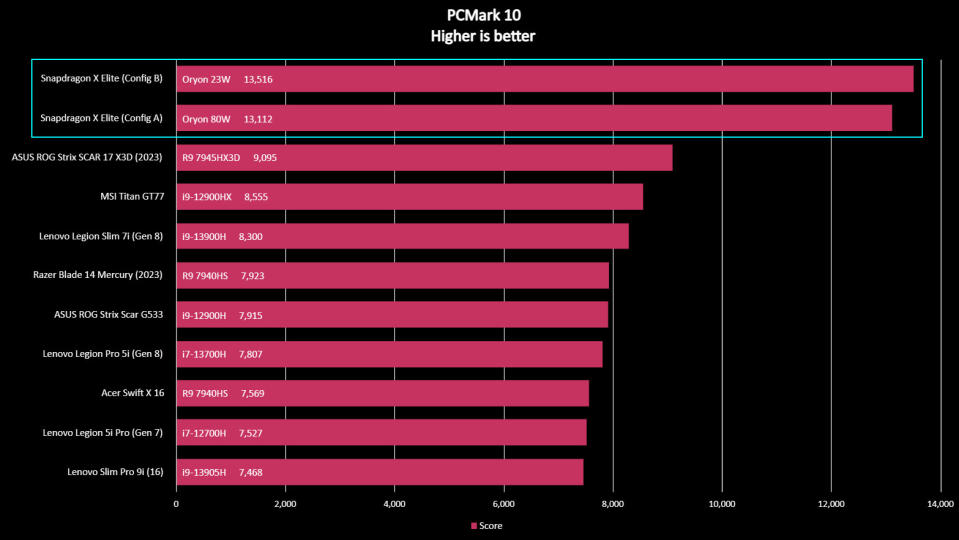
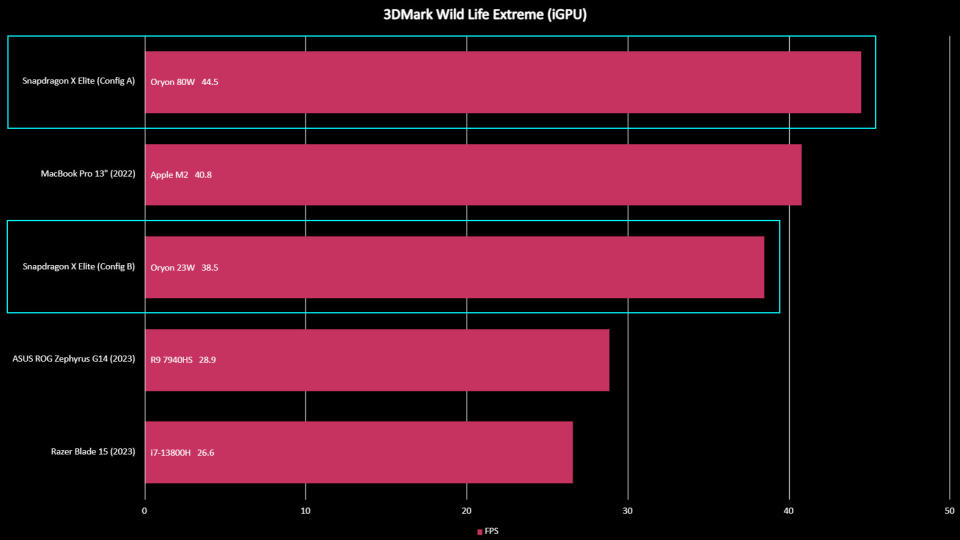
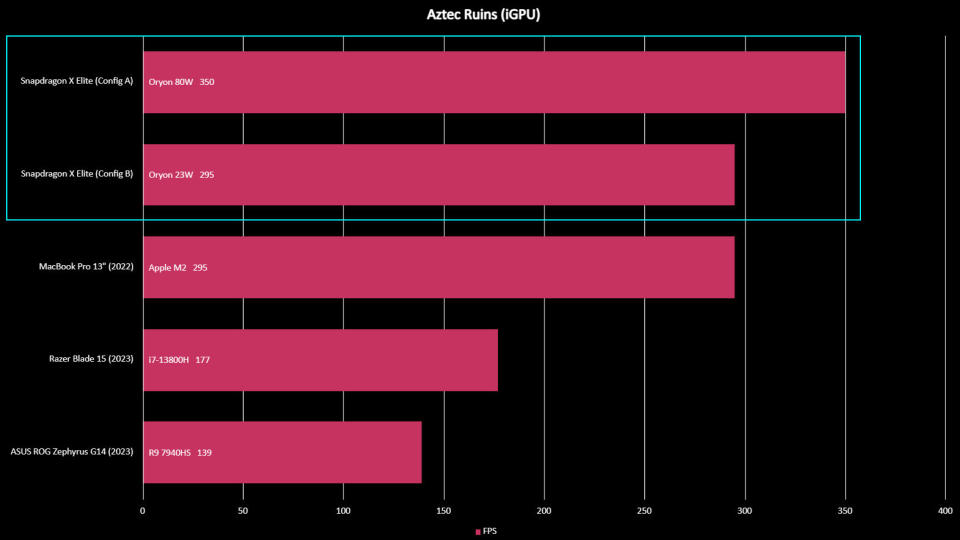
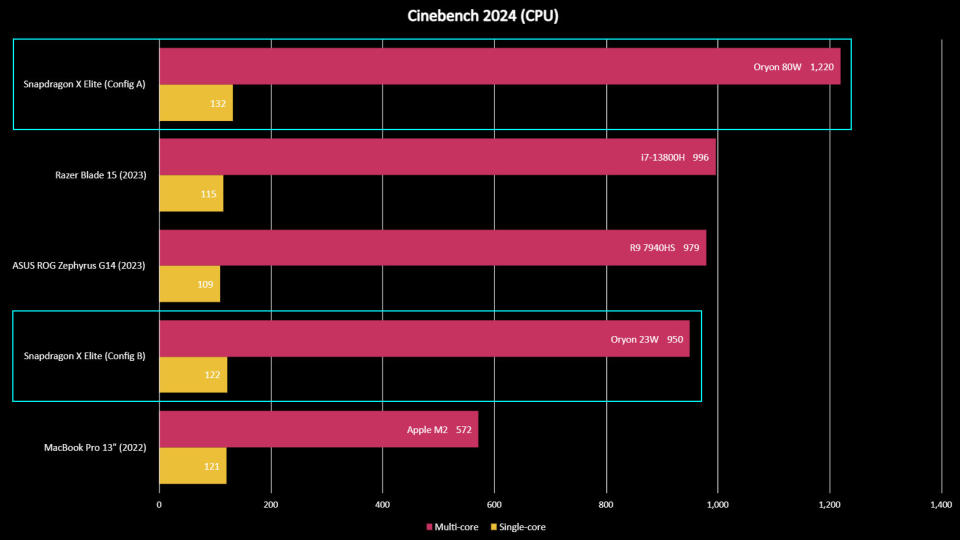
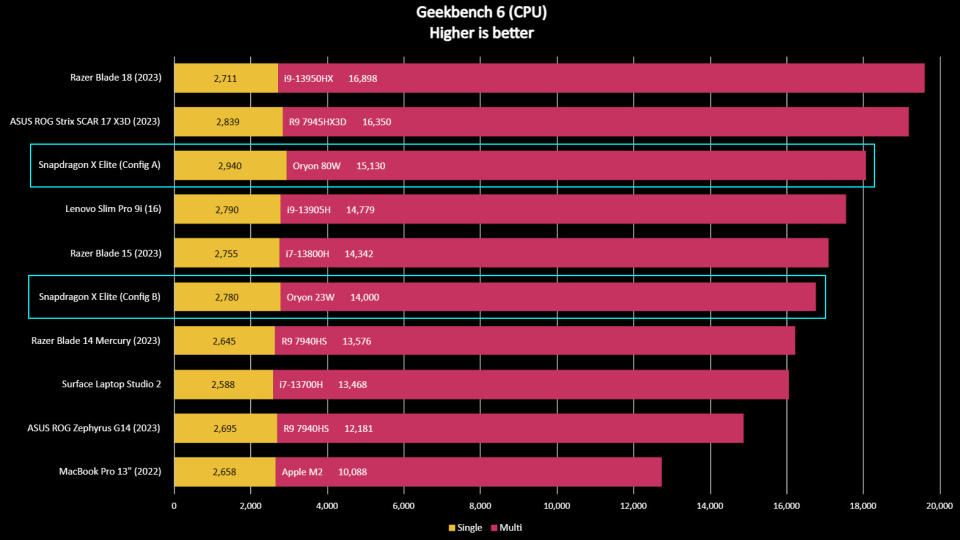
Apple didn't wait long to reveal its latest M3 processors as a counterpunch to Qualcomm's performance claims. Editor-in-Chief Daniel Rubino has an excellent breakdown of the Snapdragon X Elite vs. Apple M3 Pro performance, but to sum it up here, it looks like the Qualcomm processor is still going to best the M3 and nearly match the M3 Pro in multi-core performance.
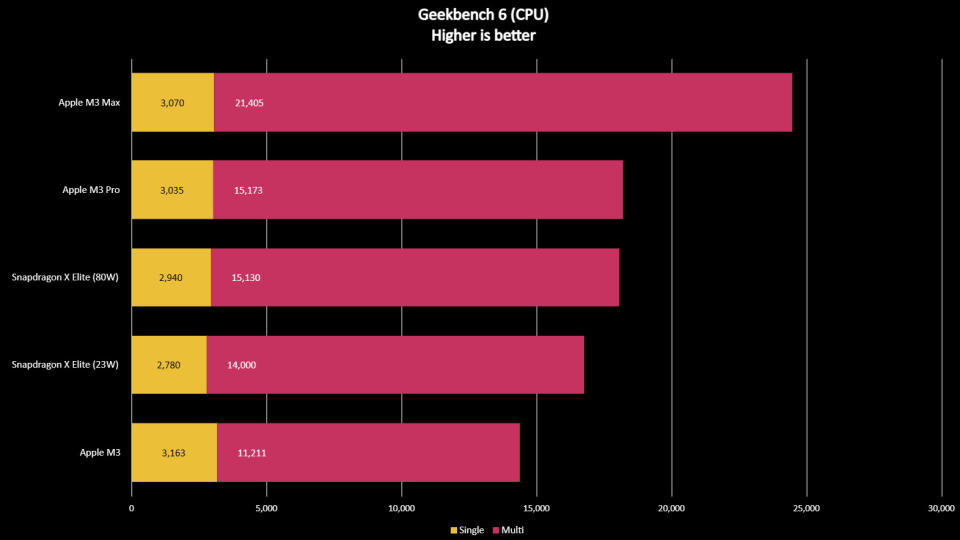
We're looking forward to directly testing the Snapdragon X Elite once its supporting laptops are released, as many factors at play can affect performance. It will also be interesting to test the real-world performance differences between the three X Elite SKUs. Nevertheless, the X Elite is shaping up to be an incredibly strong and efficient SoC.
How does the X Elite differ from the X Plus?
The Snapdragon X Elite isn't the only new chip from Qualcomm. As revealed on April 24, 2024, there's also a Snapdragon X Plus platform headed our way.
The X Plus (X1P-64-100) has a 10-core Oryon CPU capable of hitting a 3.4GHz clock speed, an Adreno GPU with 3.8 TFLOPS and DirectX12 support, and the same Hexagon NPU with 45 TOPS. It's nearly identical to the X Elite (X1E-78-100) — with the same lack of dual-core boost — except it has two fewer cores.
Among the new Copilot+ PCs are the Surface Pro 11 and Surface Laptop 7, each available with Snapdragon X Elite and Snapdragon X Plus SoC options. OEMs looking to offer more budget-friendly ARM PCs will also no doubt lean toward the X Plus SoC, reserving the X Elite for more premium devices where top performance is crucial.
